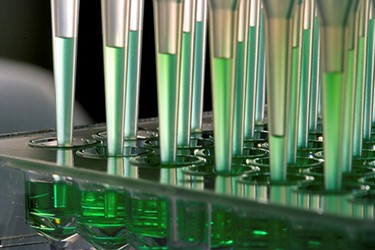Scalable Production Of AAV Vectors
By Eva Szarek, Ph.D., and Jeffrey Hung, Ph.D.

The Vectors derived from adeno-associated virus (AAV) provide promising gene delivery vehicles that can be used effectively in large-scale productions for preclinical target identification/validation studies, or used in large animal models and clinical trials of human gene therapy.
Why is AAV one of the most promising viral gene transfer vectors? Notably, recombinant adeno-associated virus (rAAV) vectors come in different serotypes (AAV 1–9), each with different tissue tropisms. rAAV provides a high rate of gene transfer efficiency, long-term gene expression, and natural replication deficiency. It is nonpathogenic and does not have the capability of altering biological properties upon integration of the host cell.
However, achieving preclinical efficacy testing, especially in large animal models and toxicology studies, requires vector quantities that simply cannot be produced in a laboratory setting or in most research-grade vector core facilities. Current methods for transfection require use of adherent HEK 293 cell cultures, expanded by preparing multiple culture plates. Ideally, a single large-scale suspension culture would be a replacement for multiple culture plates.
In this tutorial, we examine some of the currently available schemes used in generating rAAV from suspension cultures, and describe what it takes to achieve scalable rAAV production.
Get unlimited access to:
Enter your credentials below to log in. Not yet a member of Bioprocess Online? Subscribe today.
